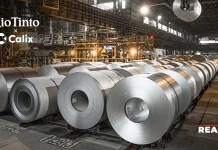Aker Horizons, through its portfolio company Aker Clean Hydrogen, and Statkraft have signed collaboration agreements to jointly explore opportunities for green hydrogen and ammonia production in India and Brazil, targeting local steel and fertilizer industries.
Also Read: JA Solar Supplies PV Modules for World’s Largest Source-Grid-Load-Storage Demonstration Project
“We are excited to join forces with Statkraft to accelerate the transition from grey to green solutions in India and Brazil,” said Knut Nyborg, Chief Executive Officer of Aker Clean Hydrogen. “The potential environmental benefits from decarbonizing hard-to-abate industries like the steel and ammonia industry in India and the fertilizer industry in Brazil are substantial. Both India and Brazil are large consumers of hydrogen, have supportive governmental policies and benefit from world-class renewable energy resources, which offers significant opportunities for green hydrogen and ammonia production.”
Emissions from the steel and ammonia industries contribute to close to 9 percent of the global greenhouse gas emissions and are classified as hard-to-abate sectors. Green hydrogen provides an emission-free alternative to decarbonizing these industrial sectors and an opportunity to increase security of supply of the two commodities.
Cooperation in India
Aker Clean Hydrogen and Statkraft have agreed to explore joint development opportunities of fully-integrated renewable power generation and green hydrogen production in India, targeting domestic hard-to-abate industries such as the steel industry, as well as ammonia for domestic use and export. The steel industry in India produces about 100 million tonnes of steel annually. In India, green hydrogen can be used to replace grey, fossil fuel-based hydrogen, coal and natural gas as fuel and feedstock. This will significantly reduce CO2 emissions, while bolstering the country’s energy security, making it less vulnerable to energy market volatility.
India currently consumes approximately 7 million tonnes of grey hydrogen per year, making it the world’s second largest hydrogen consumer. The country’s current hydrogen demand is expected to reach approximately 12 million tonnes by 2030 and about 28 million tonnes by 2050. India’s commitment to reach net zero by 2070, announced during the 26th UN Climate Change Conference, will further increase green hydrogen demand in one of the fastest growing economies in the world.




